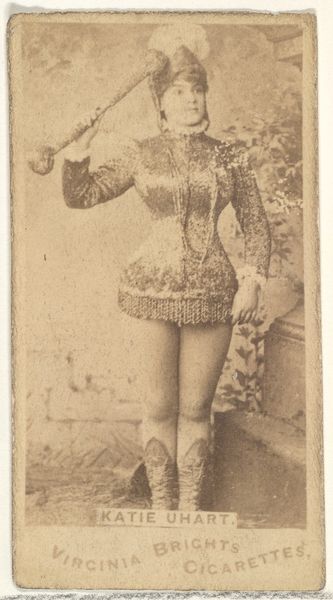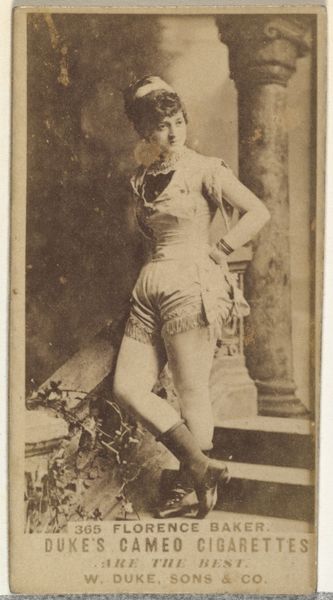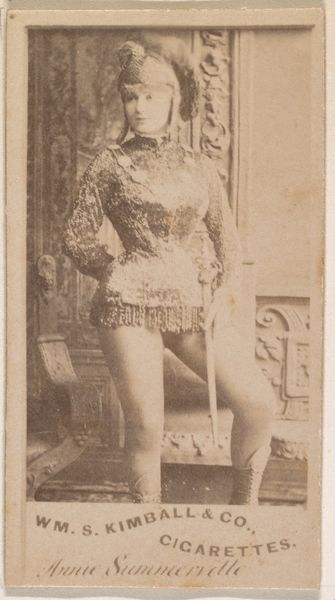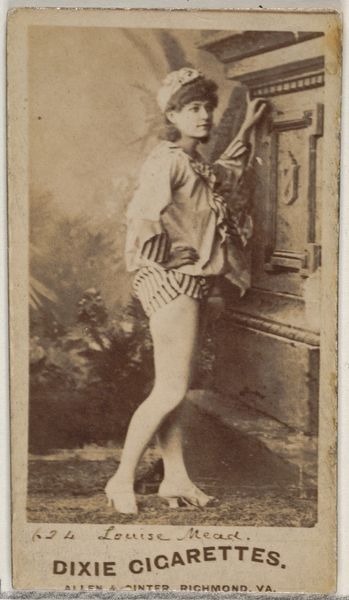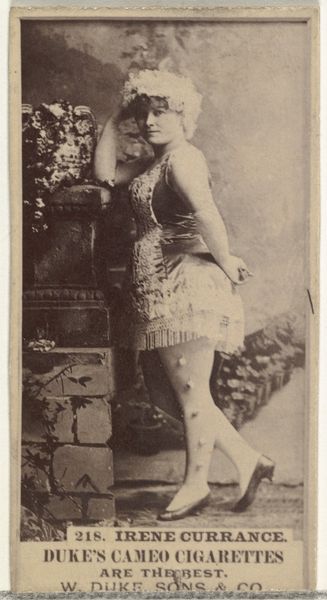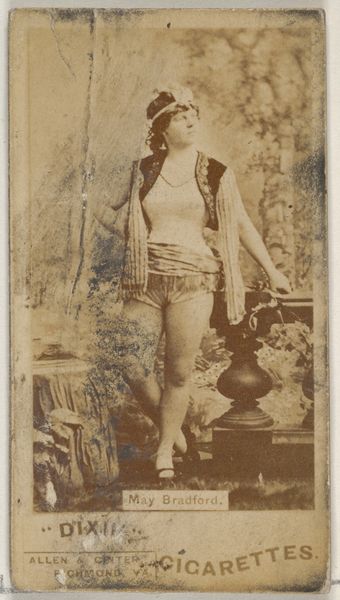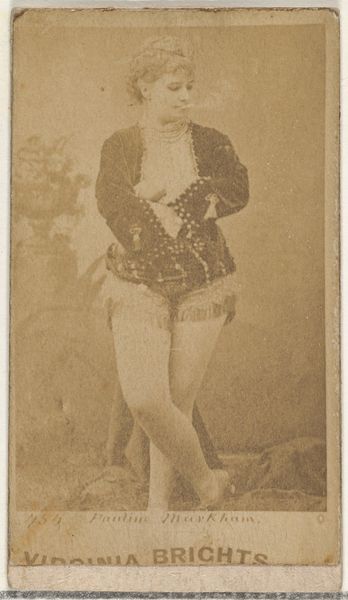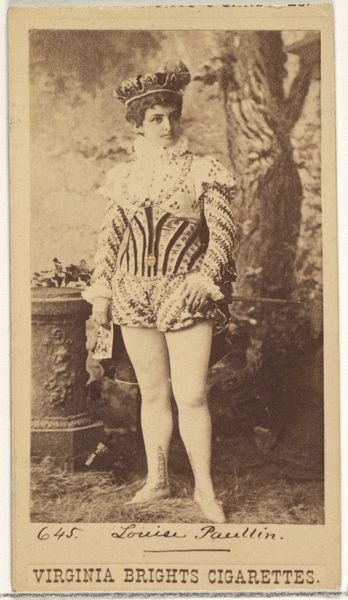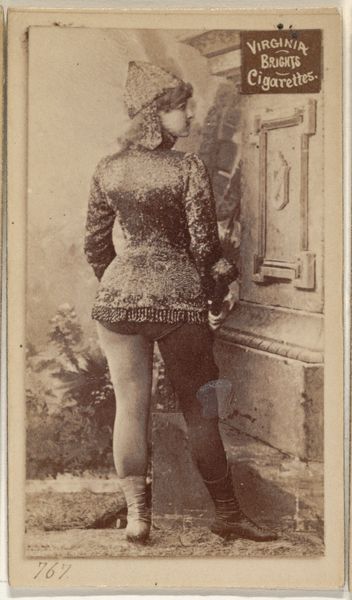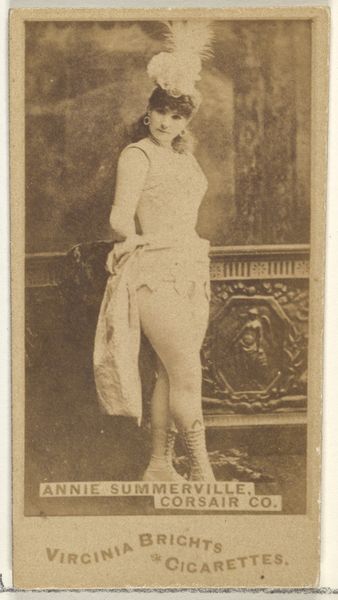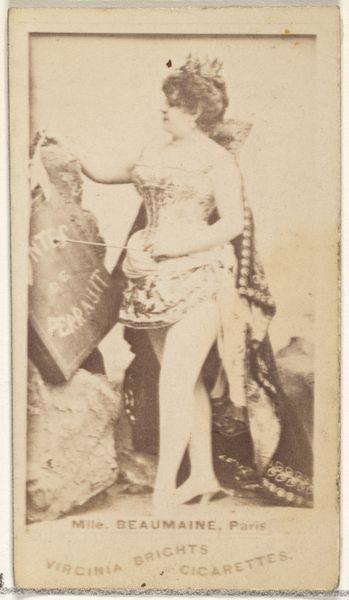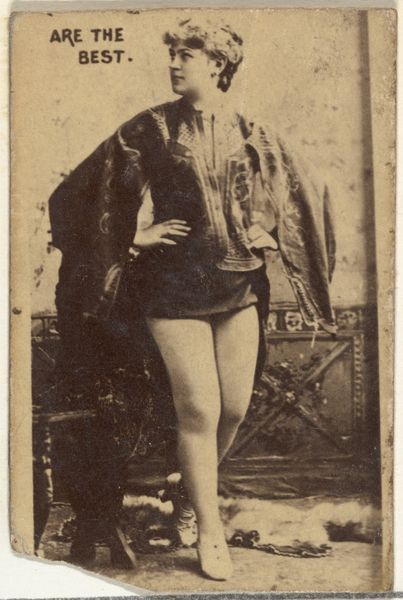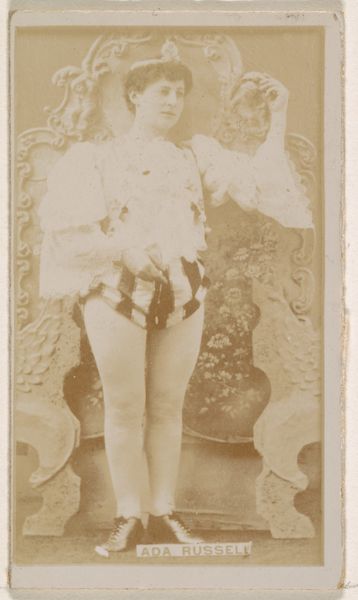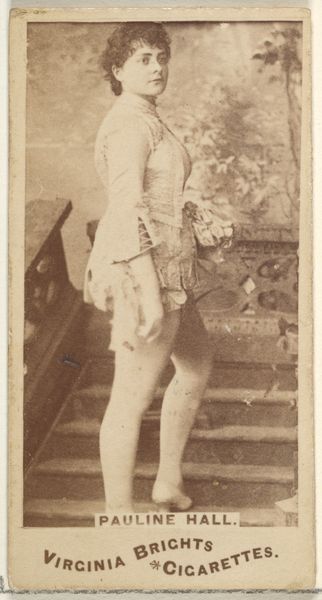
Card 546, Julia Sheldon, from the Actors and Actresses series (N45, Type 6) for Virginia Brights Cigarettes 1885 - 1891
0:00
0:00
drawing, print, photography
#
portrait
#
drawing
# print
#
photography
#
coloured pencil
Dimensions: Sheet: 2 15/16 x 1 11/16 in. (7.4 x 4.3 cm)
Copyright: Public Domain
Editor: This is "Card 546, Julia Sheldon," a photograph from the "Actors and Actresses" series, dating between 1885 and 1891, produced by Allen & Ginter for Virginia Brights Cigarettes. It feels a bit staged, the way she’s posed. What historical narrative is present? Curator: Precisely! These cards were strategically produced amidst rising industrialism, packaged with consumer goods like cigarettes. We must consider how images like this played a role in shaping societal norms, particularly concerning the commodification of women and performance. Who was Julia Sheldon? The way the photograph sexualizes Sheldon raises a whole set of intersectional questions. How does the lens of capitalism frame representations of women? Editor: That's insightful. So, it's not just a simple portrait. It's actively shaping cultural perceptions of women? Curator: Exactly. And remember, this image existed within a broader visual culture. How might it relate to feminist theory regarding the male gaze, or sociological concepts around commodity fetishism? Advertising, then and now, isn't a neutral act. It manipulates desires and aspirations, often at the expense of marginalized groups. This card participates in that dynamic. Editor: It is almost unsettling how overt that is, now that you mention it. Curator: Indeed. And, who had access to these images? Who was *excluded* from these visual representations? The social and political dynamics here speak volumes. Editor: I didn't consider the layers beneath the surface initially. Thanks for putting the work in such a revealing historical context. Curator: Of course. Looking beyond the surface challenges us to question the power structures inherent in visual culture, and how representation impacts lived experiences across axes of difference. This perspective can reshape how we approach historical archives.
Comments
No comments
Be the first to comment and join the conversation on the ultimate creative platform.
